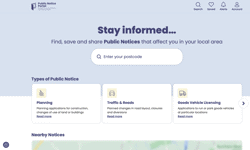Digital channels, products and platforms are both multiplying and evolving fiercely; pushing the boundaries of how we live, work and do business, while still presenting significant opportunities to revolutionise the customer experience across all forms of publishing.
Whether it is the shifting balance from print-only to a digitally diverse portfolio, innovative pay models, and new subscriptions or even the changing face of editorial in the new world of digital content, digital’s impact is clearly visible across media and publishing.
However, whilst digital innovation can easily be seen in publishers’ customer facing offerings as well as their corporate objectives, digital innovation is a rarer beast in their internal and ‘back office’ operations. Few publishers appear to have robust strategies in place to deal effectively with the transition to commercial models that place greater emphasis on digital, let alone strategies to manage any corresponding decline in traditional business.
These problems prompted Deloitte to engage senior publishing and media industry leaders to explore the strategic and operational experiences of digital, to establish whether the ‘digital back office’ really exists or not and, if not, how publishers can manage the transition to it.
Out of sight, out of mind
Within publishing, the findings from the group of senior leaders that we spoke to was clear – digital is a growing part of our business and integral to our strategic objectives. Acquisitions strategies feature specific objectives to support the growth of digital capability and product innovation. Yet digital isn’t killing traditional business quickly. Experience of growth is varied and the commercialisation of digital models is still in its infancy. In essence, the view from this group of industry leaders was that digital is here to stay and they want more, but the transition to and impact of digital is more complex than it seems.
The operational experiences of delivering digital strategies in practice were surprisingly consistent. Process standardisation is rare, with operating companies seemingly given free rein in the design of (non-standard) processes and systems in pursuit of quick digital wins. Few organisations recognised ‘gold standard’ processes in their own back office ways of working and all recognised opportunities for improvement. This is understandable since digital models have not yet been industrialised and businesses need the opportunity to experiment. Yet, this experimentation comes at a cost. Soon non-standard processes and disparate systems become a huge burden to the business. Finance teams, tasked with establishing the commercial implications of digital, become swamped with requests for analysis yet are hindered by process and technology.
In this environment, the back office quickly becomes a near impenetrable and costly web of strategic compromises, manual processes and inefficiencies. The research points to one crucial and all too common misconception: that any back office can cope with the transition to and impact of digital.
New platforms, new models, new complexity
Unlike technical innovation of the past, there is no single dominant platform or de facto eco-system on which to base digital growth. Competition from the likes of Apple, Google, Facebook and Microsoft has prevented one platform from reigning supreme and users interact with and consume content through a myriad of tools and devices. In spite of this increasing complexity, consumers want a simple, consistent experience – putting the onus on technology and content providers to integrate.
The lack of a standard digital platform coupled with the acquisitive nature of the publishing industry, has caused significant fragmentation in the back office systems landscape. This problem is particularly acute for the big publishers but can be found in smaller firms too. One publisher may have a dozen or more bibliographic and editorial / content production, logistics and distribution, billing and finance systems; in short, a massive complex web of technology. M&A adds another dimension – rarely does a competitor’s IT infrastructure perfectly align with your own.
Soon customer service and finance functions become bloated, driving inefficiency, impacting customer service. These efficiency and customer service challenges are not the end of the story. With a broken customer finance platform or one that is under the control of a third party or agency, it becomes increasingly difficult to leverage that crucial asset – customer data. Customer analytics and performance data, crucial to generating and maintaining competitive advantage and helping drive that seamless customer experience is suddenly insufficient, poorly summarised or not even under your control.
When a company has multiple transactional and management reporting systems, their users relinquish effectiveness in being able to maintain the quality of data, control the business, respond to customer needs and to provide and respond to useful management information. These are the basic strategic requirements of a back office technology landscape and ignoring those means stagnation or failure.
Losing sight of the customer
Not only does digital provide technological complexity for publishers, but the process of actually selling products and serving customers in the digital world present new challenges too. Serving millions of customers in a global, digital and infinitely flexible market is a daunting prospect that requires real confidence in subscription billing, micro-billing and collections processes. This confidence is very difficult to build, and, as is the case across publishing with the move away from B2B selling, it is even harder to come by.
Yet, perhaps paradoxically, digital can also break the link with publisher and customer. Digital content is often sold through agencies like technology platform owners for example. This forces new commissioning and agency selling structures, eating into publisher margins. At the same time, content publishers lose the powerful (and profitable) link with the end consumer.
Traditional business: a managed decline?
The impact digital models have on traditional business also tends to get ignored. Certainly digital growth needs to be managed appropriately but so too does any decline of traditional models. Suddenly, businesses find new emphasis being placed on cost control and product profitability. Performance targets need to be revised as traditional business models start to decline as digital models mature. Any decline like this has to be managed effectively to ensure there is no fallout for the rest of the business. This is one of today’s major challenges facing publishing and media companies.
Understanding rights & royalties
As quickly as new platforms are emerging, new content is being developed to sell through them. Editorial requirements change rapidly as demand for content shifts and soon digital rights can become a tangled web of intellectual property owners and interested parties. For publishers, maintaining agility and the ability to leverage content in response to shifts in consumer demand and technological possibilities, whilst at the same time calculating and managing royalties efficiently can be a real challenge. In the worst cases, contract and commercial innovation is stifled simply because the back office capability does not exist to calculate the royalty exposure or manage the contract terms.
Driving performance
Traditional, cumbersome and inflexible business intelligence models do not work with digital because it requires more agile thinking and instant access to insight. The ability to experiment is also critical – yet usually impossible in traditional performance models. With an expanding array of platforms and channels as well as the possibility of a managed decline of traditional business, publishers need to ensure that they always know which customers and products are most valuable.
Deloitte research points to significant shortcomings in the application of Business Intelligence to support the transition to digital. Typically, there is too much reliance on traditional intelligence models with highly inefficient (and potentially non-compliant) workarounds, a lack of recognition of the need to support the transition to a mix of commercial models and a general failure to future-proof business intelligence.
A related point, and one that is not unique to publishing, is the over reliance on multiple platforms for digital reporting. A ‘single version of the truth’ is in very short supply with multiple businesses, divisions, even products and customers reporting differently. Driving competitive advantage through the generation of decision-grade information out of such a scenario is nearly impossible. We see time and time again that the lack of a central core performance model covering all aspects of digital product, customer and channel reporting prevents firms from assessing digital strategy fully and effectively.
Making acquisitions work
Understandably, the immediate priority of any firm when implementing its strategy is to secure its products, channels and markets. The breakneck pace of the digital world means that nearly all efforts are focused on breaking new ground or quickly expanding into space created by a new category.
This can be seen particularly well in publishing where, despite the turbulence caused by the global economic downturn, acquisition activity is still trending positively. The corporate strategists helping drive much of this M&A activity were quick to recognise the role digital technologies and products have in the future of publishing. Online, tablet and mobile content dissemination is now the norm, driving both continued commercial and pay model innovation and new acquisitions. We are also seeing acquisitions activity in the digital workflow sector as the big publishers see more and more value in the vertical integration of their digital supply chains.
To make such acquisitions work, however, publishers need to ensure that acquisitions strategies are appropriately supported by an exceptional back office. Many firms do not realise that the ‘Digital Back Office’ requires new expertise, processes and systems - even a potential new operating model. Continuing to drive acquisitive growth strategies whilst ignoring these facts quickly magnifies any pre-existing weaknesses and, before long, the success of the acquisition is jeopardised.
The Digital Back Office
These issues are not insurmountable. Targeted intervention can revolutionise process, system and reporting capability and drive out inefficiency. Strategies can be deployed that help publishers transition effectively to new models to harness digital opportunities. More often than not, what this involves are a set of targeted capability enhancements rather than full-scale transformation. The critical element is getting the mindset right. Digital cannot rely on old ways of workings, nor can the impact on traditional business be ignored into submission. Half the battle is recognising that with new digital capability come new challenges and that the answer lies in empowering the Digital Back Office.










